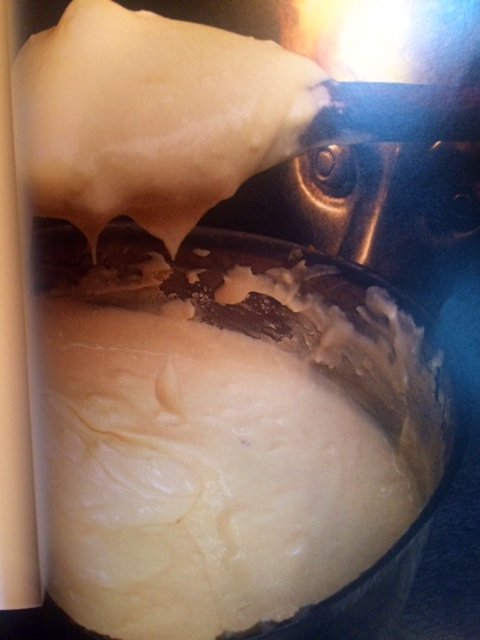This a monthly series which I have been publishing for years. You can subscribe here, to get the latest cheese delivered directly on to your screen.
Yes, no, I haven’t been to Iran or Kurdistan, Azerbaidjan or Armenia. Unfortunately, because my friend and colleague Naomi Duguid’s latest cookbook (which is as much about people and landscapes and history as it is about recipes) is pure temptation. However I don’t think I would have encountered Kamakh Rijal if food historian and Persia specialist Charles Perry who made me aware of it, is right (and he mostly is): this old cheese spread recipe seems to have gone extinct.
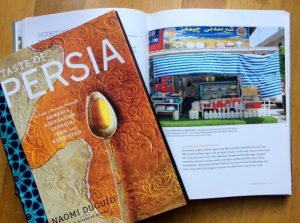
Hard to believe. It is so simple that I almost immediately had a go. And wholeheartedly recommend it to all of you. Whose thumbs, like mine, are the opposite of green, who lacks the patience for real bread baking (like me, alas) but still wants to participate in food production beyond the stove – here is your niche, called Kamakh Rijal (which means something fermented and spreadable and should really have several other signs in its spelling which transcend my keyboard – apologies). You’ve probably noticed by now that I’ve been delving once again into the writings of Wendell Berry, the ever inspiring poet, farmer and cultural acitivist from Kentucky. His work is one big manifesto to think actively instead of passively. Like the 1989 essay The Pleasures of Eating. Go read! Therefore this cheese oft he month is a historic recipe for a cheese spread.
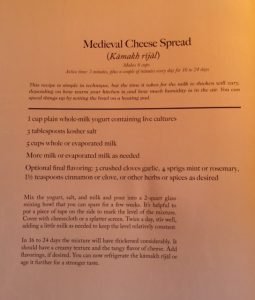
Charles has written several times before about Kamakh Rijal (last in the new, highly commendable magazine Cured) as well as translated a cookbook from 13th century Baghdad which includes this recipe. It tells us to mix soured and fresh milk with salt and put it out (covered) in halved, cleaned and dried gourd shells, on the roof, in June, at the start of the hot season. Every morning and evening we are supposed to stir, and after a few days, replenish daily with fresh milk to make up for the evaporation, until mid September. In August herbs and spices such as mint leaves, nigella and garlic, or rosewater, are to be added, and finally, in October, the Kamakh rijal is ready to be taken in and savoured on bread.
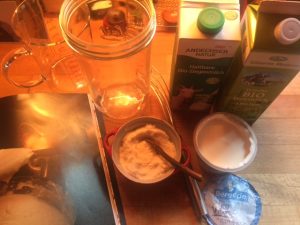
And probably highly aromatic by then! I had neither a roof nor the hot Persian sun at my disposal (the latter could be replaced by a warm plate set to max 113°F/45°C!) and lacked patience (see above). For all those reasons I ended up with a kind of thick kefir, delicious for breakfast with cucumber and tomatoes. Also I used a large Mason jar, deeming it handy. In a flatter bowl evaporation would have been more significant, I hardly needed to add any milk. I happened to have goats milk and sheeps yoghurt and used 120ml of the yoghurt with each 660ml goats and cows milk as well as 3 table spoons salt. I covered the jar with a muslin and put it in a warmish corner of the kitchen, licking the spoon after each stirring, full of expectations. First nothing much happened, then the milk turned noticeably sour – and on seventh day it thickened.
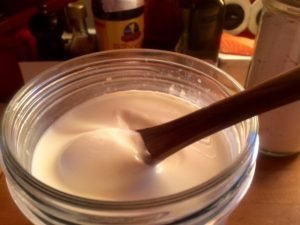
After a few more days the fermentation stopped because I didn’ add any fresh lactose, and after about 15 days I decided to store the jar in the fridge. Charles had a completely different result (the picture below is his, from Cured), but that is the beauty of active participation, it makes for diversity. I will have another try in the summer, as soon as I’ll be home long enough. Enjoy!
This a monthly series which I have been publishing for years. You can subscribe here, to get the latest cheese delivered directly on to your screen.
If you enjoyed reading this, you might consider clicking on the button below and supporting me in my work. I’d be more than happy. Thank you.
